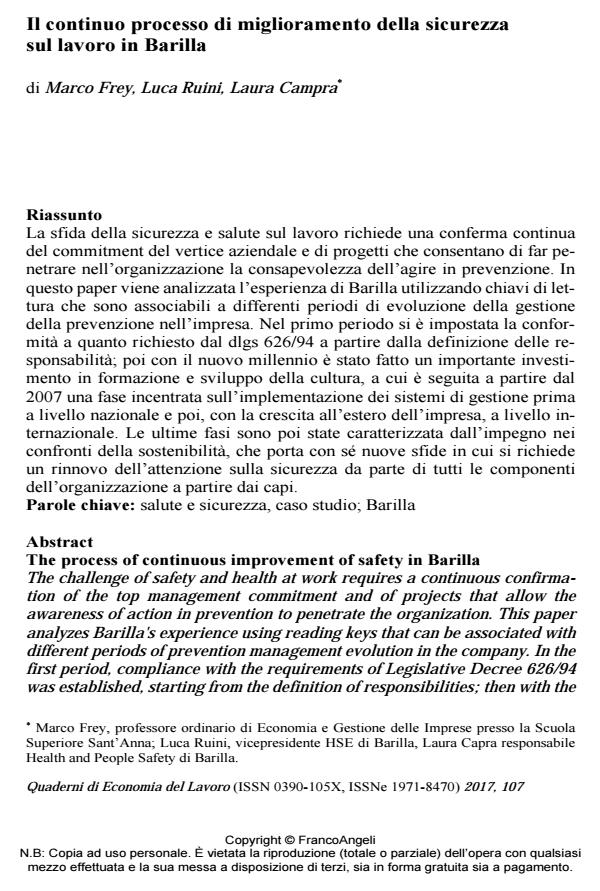The process of continuous improvement of safety in Barilla
Journal title QUADERNI DI ECONOMIA DEL LAVORO
Author/s Marco Frey, Luca Ruini, Laura Campra
Publishing Year 2018 Issue 2017/107
Language Italian Pages 77 P. 21-97 File size 1072 KB
DOI 10.3280/QUA2017-107002
DOI is like a bar code for intellectual property: to have more infomation
click here
Below, you can see the article first page
If you want to buy this article in PDF format, you can do it, following the instructions to buy download credits

FrancoAngeli is member of Publishers International Linking Association, Inc (PILA), a not-for-profit association which run the CrossRef service enabling links to and from online scholarly content.
The challenge of safety and health at work requires a continuous confirmation of the top management commitment and of projects that allow the awareness of action in prevention to penetrate the organization. This paper analyzes Barilla's experience using reading keys that can be associated with different periods of prevention management evolution in the company. In the first period, compliance with the requirements of Legislative Decree 626/94 was established, starting from the definition of responsibilities; then with the new millennium an important investment was made in training and development of culture, which was followed from 2007 onwards. phase focused on the implementation of the management systems first at the national level and then, with the growth abroad of the company, at the international level. The last phases were then characterized by the commitment to sustainability, which brings with it new challenges in which a renewal of the attention on safety is required by all the components of the organization starting from the leaders.
Keywords: Health and safety at work, Case study, Barilla
Marco Frey, Luca Ruini, Laura Campra, Il continuo processo di miglioramento della sicurezza sul lavoro in Barilla in "QUADERNI DI ECONOMIA DEL LAVORO" 107/2017, pp 21-97, DOI: 10.3280/QUA2017-107002